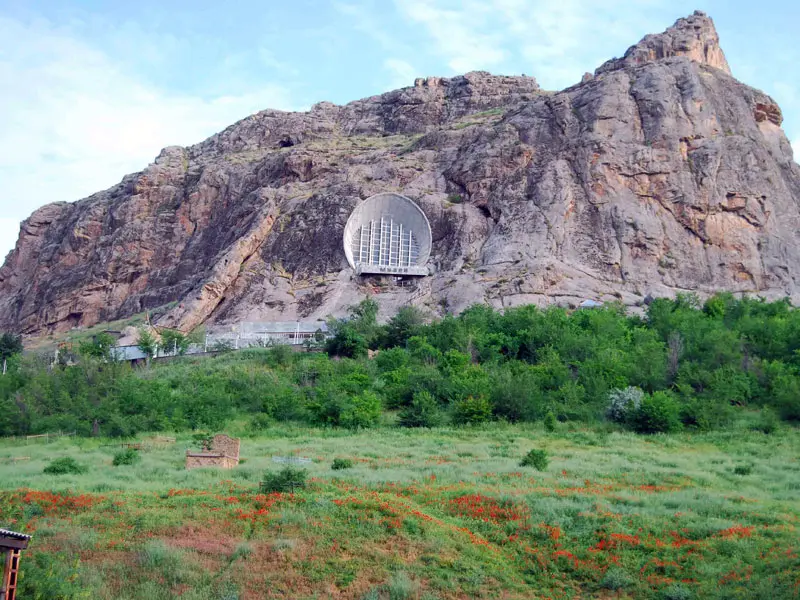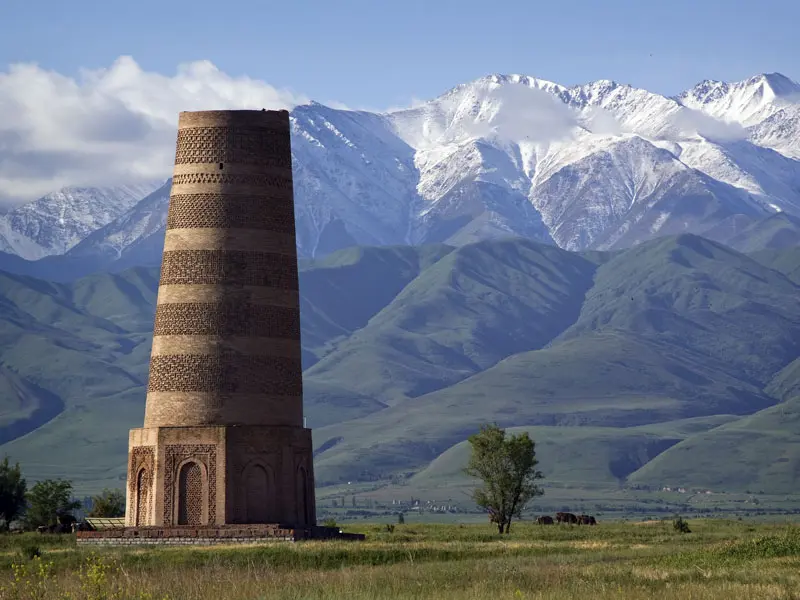Kyrgyzstan, located in Central Asia, borders with Uzbekistan, Kazakhstan, Tajikistan, and China. Natural wonders of the country are completed with historical sites and 2000 years of rich culture. As part of the Silk Road, Kyrgyzstan has become a very attractive touristic direction. Three cultural and natural sites are now included in the list of UNESCO World Heritage Sites. Two of them are shared with other countries.
UNESCO Sites in Kyrgyzstan:Sulaiman Too Sacred Mountain

The Sulaiman Too Mountain is located in the Fergana Valley, Osh Province. This rocky mountain with five peaks was a religious site and place for pilgrimage for over a thousand years. There are about 100 petroglyphs and sacred places on the territory. Two medieval mosques of the XVI century are still visited. One of the mosques is built on the highest peak of the mountain. The Suleiman Too Sacred Mountain played an important role both in pre-Islamic and Islamic cultures.
According to historians, Sulaiman Too Mountain was mentioned in Claudius Ptolemy’s’ book as the “Stone Tower” that marked the midpoint of the Silk Road. Footpaths connect 17 places of worship; the pilgrims visited the sacred places to get blessings. The site is coordinated and under the protection of the Site Management Council. In 2009, Sulaiman Too Sacred Mountain and its historical monuments were included in the list of UNESCO World Heritage Sites.
UNESCO Sites in Kyrgyzstan: The Routes Network of Chang'an-Tianshan Corridor

The section of Silk Road that stretches from Chang'an/Luoyang (China) to the Zhetysu region (Central Asia) is now considered a World Heritage site. The Silk Road that existed from II century BC up to the XVI century was one of the most important factors to link multiple civilizations. This complex route connected cultures of Central Asia, Western Asia, Near East and the Subcontinent.
Chang'an-Tianshan Corridor stretching 5000 km was a trading route of Chinese silk that was delivered to Roman Empires. The route passed through deep gorges, along the rivers and lakes, through hot deserts and snow-capped mountains.
The Routes Network of Chang'an-Tianshan Corridor includes thirty-three sites; palaces, capital cities, Buddhist temples, beacon towers, ancient paths, the part of the Great Wall, tombs, fortifications, and other religious buildings. The Tian-shan Corridor witnessed historical and cultural development of civilizations; the trading route prompted the growth of settlements, small and large cities. The historical changes associated with the Silk Road and mainly the Chang'an-Tianshan Corridor are also reflected in the impact of Buddhism in China, the spread of Zoroastrianism, Manichaeism and early Islam in East Asia. The Routes Network of Chang'an-Tianshan Corridor was inscribed as a UNESCO World Heritage Site in 2014.
UNESCO Sites in Kyrgyzstan: Western Tien-Shan Mountains

In 2016 the third natural site, Western Tien-Shan was included in the list of UNESCO World Heritage Sites. This is the second transnational property listed; it is shared with Kazakhstan, Uzbekistan, and Kyrgyzstan.
Rising to an altitude of 4503 meters Western Tien-Shan mountains feature a diversity of landscapes and rich biodiversity. The international and global importance of the region is the cultivated fruit crops, the great versatility of forest types and unique species of plants.
Choose the Tour to Central Asia you like most and we will organize your amazing holidays in 5 stans.













